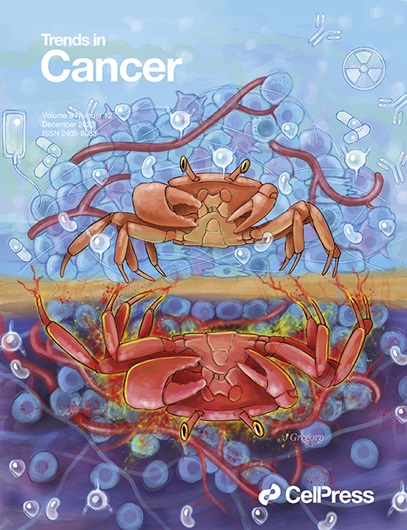癌症治疗中铜氧体耐药的转录调控。
IF 17.5
1区 医学
Q1 ONCOLOGY
引用次数: 0
摘要
铜增生是一种新发现的依赖铜的细胞死亡形式。最近的研究表明,实体肿瘤通过转录重编程逃避了这一过程,包括缺氧诱导因子1亚单位α (HIF1A)和NFE2样BZIP转录因子2 (NFE2L2)的激活以及BTB结构域和CNC同源物1 (BACH1)的抑制。靶向这些途径可能恢复铜增生的敏感性,为克服癌症治疗耐药性提供了一个有希望的策略。本文章由计算机程序翻译,如有差异,请以英文原文为准。
Transcriptional regulation of cuproptosis resistance in cancer therapy.
Cuproptosis is a newly identified form of copper-dependent cell death. Recent studies show that solid tumors evade this process through transcriptional reprogramming, including hypoxia inducible factor 1 subunit alpha (HIF1A) and NFE2 like BZIP transcription factor 2 (NFE2L2) activation and BTB domain and CNC homolog 1 (BACH1) suppression. Targeting these pathways may restore cuproptosis sensitivity, offering a promising strategy to overcome therapy resistance in cancer.
求助全文
通过发布文献求助,成功后即可免费获取论文全文。
去求助
来源期刊

Trends in cancer
Medicine-Oncology
CiteScore
28.50
自引率
0.50%
发文量
138
期刊介绍:
Trends in Cancer, a part of the Trends review journals, delivers concise and engaging expert commentary on key research topics and cutting-edge advances in cancer discovery and medicine.
Trends in Cancer serves as a unique platform for multidisciplinary information, fostering discussion and education for scientists, clinicians, policy makers, and patients & advocates.Covering various aspects, it presents opportunities, challenges, and impacts of basic, translational, and clinical findings, industry R&D, technology, innovation, ethics, and cancer policy and funding in an authoritative yet reader-friendly format.
 求助内容:
求助内容: 应助结果提醒方式:
应助结果提醒方式:


